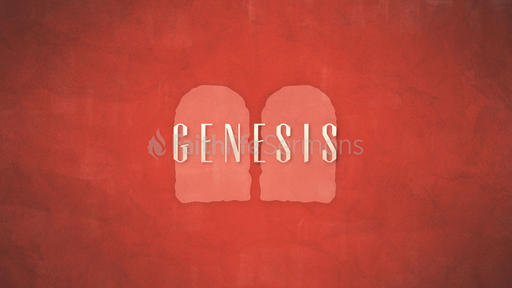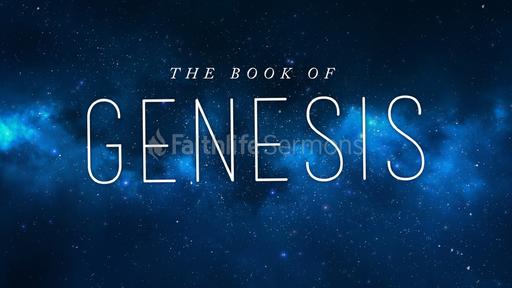Genesis 11:1-32

Notes
Transcript
Sermon Tone Analysis
A
D
F
J
S
Emotion
A
C
T
Language
O
C
E
A
E
Social
Background
Last week we looked at the descendants of Noah and his sons.
Gen. 11:1-4
We read last week that all the families of the sons of Noah were listed by their lands and their languages.
We saw the families of Japheth, Ham, and Shem listed by sons, grandsons, and further on.
I explained that the lists were given in order of significance, as well as those who had a more in-depth description.
In the lengthy description of Ham’s grandson Nimrod, we see the beginning of his kingdom was Babel, in the land of Shinar.
In the listing of Shem’s great-great grandson Peleg, we see that the earth was divided in his days.
CHRONOLOGY CHART
CHRONOLOGY CHART
In chapter 11, we are given a more detailed description of what took place with humanity during the events of chapter 10. This is reminiscent of chapters 1 and 2.
Originally, all of Noah’s descendants spoke the same language, and were settled in an area west of Shinar, which could possibly the area of Israel’s Promised Land.
MAP
MAP
As seen previously, it was during the day’s of Peleg that the earth was divided. Considering the time frame that we’re dealing with, the “whole earth” probably consisted of 10’s of thousands of people, all living in close proximity.
Some journeyed east; we know from before that Nimrod led them to settle in the land of Shinar.
As mentioned last week, the mighty hunter Nimrod founded Babel, Erech, Accad, and Calneh, in the land of Shinar.
Shinar is most certainly the same area as Sumer, where the ancient Sumerians dwelt and of whom the pagan deity Marduk worshipped. It’s entirely likely Marduk was Nimrod, since he is attributed with building Babylon.
Marduk was said to have used a divine “wind weapon” as well as a bow, spear, net, and a thunderbolt. He also vanquished and enslaved a dragon.
They made bricks to build a city that would eventually be called Babel, and also a tower that would “reach into heaven” in order to make for themselves a name.
This is possible because all men speak the same language, there are no barriers.
The purpose reveals the pride of mankind. They seek renown, just like the Nephilim before the Flood. Nothing has changed in spite of the Flood.
The tower that would reach into heaven was almost certainly a ziggurat, and possibly a specific one named Etemenanki which was dedicated to Marduk in Babylon.
ZIGGURAT
ZIGGURAT
Notice the alternative - they will be scattered across the face of the earth.
There are two examples here of defiance against God. The first is to ascend to heaven, where God’s throne is. This was the lie that Satan believed (Isa. 14:12-14).
The second is to defy God’s command to “fill the earth” and to “populate the earth” (Gen. 9:7).
Gen. 11:5-9
God sees what mankind is up to, and responds.
Notice firstly that God “came down to see” what man was doing. The biblical narrative is actually ironic and written in satirical style, almost mocking the “great” human endeavor to ascend to heaven with God coming down to look upon their tiny city and tower.
God recognizes the unity of humanity and the capabilities which that unity affords. Knowing the heart of man, He sees that they will strive in their sin and the world will go right back into the condition it was before the Flood.
God’s response to this undertaking was much less wrathful than His previous response to the sin of mankind. Instead of wiping them out entirely, He chooses to disrupt their unity and confuse their language.
In the confusing of language, God causes man to do the very thing they were afraid of: scatter across the face of the earth. The building of the city ceased that this time.
Recall the account of Nimrod: Gen. 10:10-12. He traveled back west and north into Assyria, and built Nineveh.
ASSYRIA
ASSYRIA
Because of God doing this, the city was named Babel, which means confusion.
A side note - just as there are global flood myths, so too are their other pagan myths detailing the events of the tower of Babel and confusing language.
Thus God accomplishes for man what they will not do for themselves - obedience to His command to fill the earth.
God is sovereign, and His will cannot be thwarted.
God is sovereign, and His will cannot be thwarted.
Gen. 11:10-26
Shem is the oldest of Noah’s sons, and began having children 2 years after the flood. He was 100 years old.
Similar to last week, the genealogy goes according to their significance to Israel, specifically to the family of Abram.
CHRONOLOGY CHART
CHRONOLOGY CHART
Notice the lifetimes of each individual, slowly shrinking.
Noah lives long enough to be able to meet Abram’s father Terah, and dies 2 years before Abram is born.
Verse 26 echoes Noah’s account in Gen. 5:32 almost identically.
Gen. 11:27-32
Once again, there is an echo of Noah’s account in Gen. 6:9.
Terah’s significance is that he was the father of Abram, or Abraham, the father of the Hebrew people.
We see tragically that Abram’s brother Haran died. This occurred in the land that Abram was living with his father, Ur.
We also see the introduction to Abram’s wife, Sarai, as well as the fact that she was barren.
After the death of his son Haran, Terah decided to leave and enter into Canaan. He takes Abram with him but leaves behind his son Nahor and his family.
They follow the route along the fertile crescent, northwest through Assyria.
ASSYRIA
ASSYRIA
They traveled all the way into the region of Haran, and then stopped.
Terah was 70 years when he was the father of his 3 sons, and he lived another 135 years before he died in the city that bears the name of his dead son, Haran.
APPLICATION
APPLICATION
God is sovereign, His will cannot be stopped.
Mankind will continue to fall into idolatry and sin for as long as we live. We need a savior.
God is slowly weaving His plan together to provide mankind with a Savior through His chosen people.
Next week, we will begin a new sermon series in 3 John.
ADVERTISEMENT
Related Media
See moreRelated Sermons
See more

Chad Wilham • 34 views


Jeff Long • 145 views



